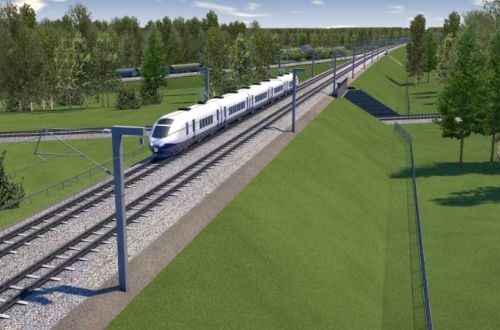Based on the analysis of climate and weather data from the past 30 years and national climate projections, the study concluded that the Baltic region would gradually experience milder winters with less snow, but more wet snow, freezing rain, glazed frost and ice formation events. In summer, more frequent heat waves are likely, leading to maximum temperatures around or even exceeding 40oC.
The study also expects more heavy rainfall and thunderstorms in the region, as a result of higher air temperatures, which may cause more intense formation of typical summer thunder clouds and increased wind gusts speeds.
However, the report noted there is still a lot of uncertainty about long-term weather predictions about storms and wind speeds.
Rail Baltica is multi-national joint venture between Estonia, Latvia and Lithuania to construct an 870km standard-gauge line, which includes 213km in Estonia, 265km in Latvia and 391km in Lithuania.
The study was commissioned by RB Rail, which is overseeing the project, and conducted by the Estonian environmental management and spatial planning consultancy company Hendrikson & Ko in cooperation with SIA Vides Eksperti and DGE Baltic Soil and Environment.
RB Rail says the main objective of the study was to prepare for upcoming climate change during the whole lifecycle of the new railway line, thus ensuring the infrastructure is sustainable and prepared for different climate change scenarios.
“Climate change is becoming an important element in designing and constructing infrastructure objects that will serve the public needs for decades to come,” says Mr Martin Ruul, the leading expert at Hendrikson & Ko.
“This kind of approach is unique in the Baltics and therefore it is important to note that the management of climate risks should be integrated into the general risk management, monitoring and control systems of Rail Baltica and not managed as a stand-alone subject.”
Although this research is aimed at evaluating the climate change impact on the railway and how to mitigate it, RB Rail says the new infrastructure itself will contribute to climate change mitigation helping to reduce CO2 emissions, air pollution and noise levels.
Climate changes can greatly impact the construction, maintenance and operation of railways, as heavy rain, winds and storms as well as snow, freezing rain and glazed frost can suspend the operation or seriously damage infrastructure and affect passengers.
The study has identified the most vulnerable parts of the railway infrastructure and proposed relevant adaptation and mitigation measures, which will be integrated in the design of the line and further implemented during the construction phase.
An in-depth review of the report will appear in the November issue of IRJ.

